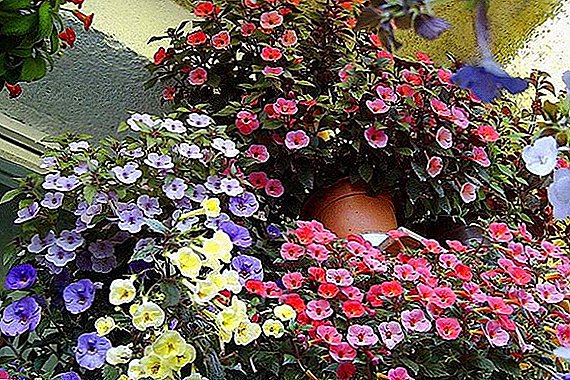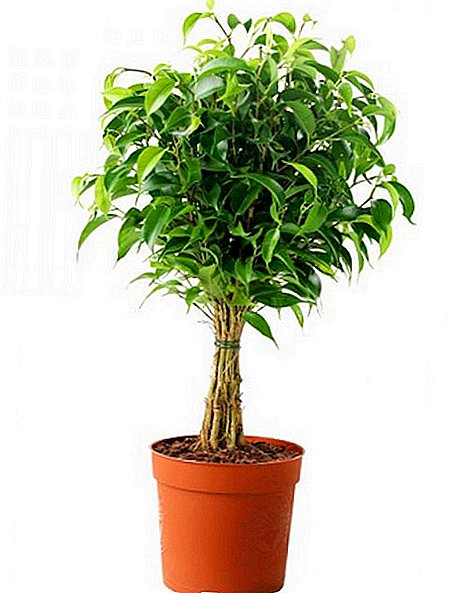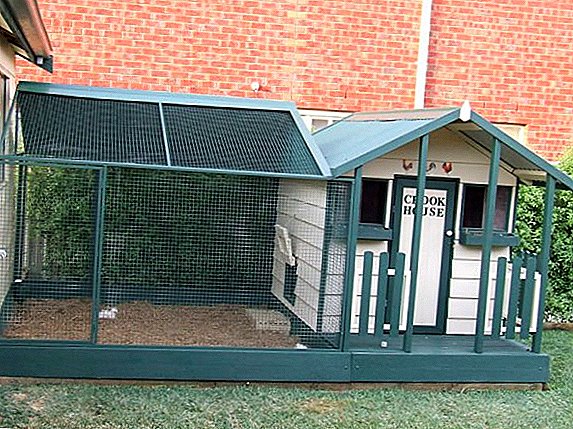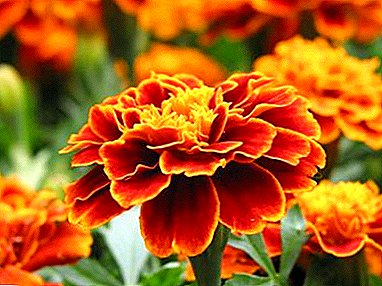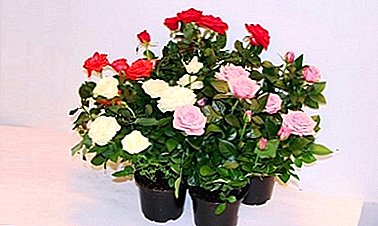
Among the gardeners are very popular spray roses. They are compact in size and fit perfectly in any interior.
And their beautiful bloom long pleases the eye. In the care they are capricious, so they need special conditions of detention.
This article describes in detail the process of growing shrub roses in a pot. Also given useful recommendations for growing plants.
What is this houseplant?
Botanical description
At room rose stalks are thick with thorns, leaves of dark green color, rigid. The flowers of the plant are small and different shades.
Features
The main feature of the rose when grown at home is that it does not grow more than 50 cm in height. It is propagated only by cutting, the grafted plant, most often in the room does not survive.
Advantages and disadvantages
pros:
- Year-round bloom.
- Compact size.
- Can be planted on the garden plot.
Cons plants:
- Difficulty in care. The plant is capricious and requires special attention. With the wrong content can get sick.
- Period of rest. In winter, the rose requires special conditions.
- Weak fragrance.
History of origin
The place of origin of the spray rose is unknown. Some believe that it came from Southeast Asia, others that its homeland is China.
Kinds
There are many forms and varieties of roses.. The most popular are the following types.
Hummingbird

Bushes are dense, branched shoots, leaves are dense, shiny, dark green color.
Flowers rose yellow orange color. Blooming magnificent.
We offer to watch a video about the Hummingbird rose:
Green Ice

Bushes wide. The leaves are dark green, dense. The flowers are white with a green tint.
Los Angeles

Rose bushes grow up to 40 cm, richly covered with buds. Stems are straight, smooth. The color of the inflorescences varies from lemon yellow to coral.
Growing house
Landing
The first transplant is carried out two weeks after the purchase. The pot is chosen small, since in a wide and large capacity the soil begins to sour. The substrate is picked up nutritious and loose. Buy special for roses or make yourself. To do this, mix:
- garden land;
- peat;
- sand;
- humus.
 Carry out the procedure as follows:
Carry out the procedure as follows:
- A drainage layer of expanded clay or river pebbles is poured at the bottom of the pot.
- From above pour a little wet soil.
- The plant is pulled out of the old pot and, together with the earthy ball, is placed in a new one.
- The remaining space is filled with substrate.
- Then the plant is watered and put on a permanent place.
We offer to watch a video on how to plant a rose in a pot:
How to care?
When growing roses at home, you must adhere to certain rules of care.
Conditions of detention
- A place. The plant develops best on the southwest and southeast window sills. The room is regularly ventilated, as the rose needs fresh air, but does not allow drafts. In the summer, it is carried to a balcony or terrace.
- Temperature. In spring and summer, the optimum temperature content of 14-25 degrees. In the winter season, it should not exceed 5-8 degrees. Overheating has a negative effect on the flower.
- Humidity. Rose grows comfortably at an ambient humidity of at least 50%. Therefore, on hot summer days it is sprayed daily. During dormancy, spraying is reduced to 2-3 times per week.
- Lighting. The plant loves bright diffused light. In the midday hours, the rose is shaved from the direct rays of the sun, otherwise the leaves can get burned. In the winter season and when kept on the northern window sills, the pot is additionally illuminated with fitolamps.
- Watering. Rose needs regular watering. In the summer, daily. During rest water is watered moderately and less often, only to prevent drying of the root system.Bring water in small portions, as the plant is sensitive to excess moisture. After watering, the water from the pallet is drained. Use warm distilled or filtered water.
- Top dressing. From spring and summer, the plant is fed 2 times a month. In winter, 1 time per month. For fertilizers use mineral mixtures for roses. As well as the flower responds well to organic dressing, for example, mullein in solution.
- Pruning. In preparing the roses for the period of sleep, they carry out the procedure for cutting the plant. Remove all weak shoots and parts. The stems are shortened to 10 centimeters. Dried flowers and leaves are regularly removed. Carry out the procedure with a sharp knife. If the stalks are not pruned, the stems are strongly drawn out, and the flowering becomes poor.
- Transfer. The procedure is carried out after trimming and only when the old pot becomes small in a rose. The pot is picked up more than the previous 5-6 cm. The plant is plentifully watered and carefully pulled out of the tank. Together with the earthy clod, they are transferred to a new pot and added soil. Placed in the shade. The first feeding is carried out after a month.
- Pest and disease prevention. Most diseases of spray roses occur with improper care. To prevent the occurrence of pests and diseases, care should be taken to maintain conditions and conduct regular inspection of the plant.
Breeding
 The fastest and easiest way to get a new plant is reproduction by cuttings. Carry out the procedure in spring or summer. Carry out the process as follows:
The fastest and easiest way to get a new plant is reproduction by cuttings. Carry out the procedure in spring or summer. Carry out the process as follows:
- Cut the stalk length of 15-30 cm. At the same time it should be at least 2 buds.
- Extra leaves and flowers are removed.
- Both edges of the cut stalk are wrapped in wet gauze and left for 10-15 minutes.
- Then, for a day, the cut off process is left in the root solution.
- Stalk is planted in sand or light soil. Deepen so that the upper kidney is above the ground surface.
- The pot is covered with a jar. Regularly air and moisturize.
With the advent of the first leaves, the greenhouse is removed and cared for as an adult plant.
Diseases and pests
The plant is often sick and is attacked by pests. The most common problems are:
- Leaf spot. Occurs with excessive watering and nutritional deficiencies. Revise the mode of irrigation and fertilizer schedule.
- Mealy dew. The leaves curl and fall. The reason is abundant watering and maintenance of roses in cool rooms with high humidity. For the treatment of the disease, the plant is sprayed with a solution of soap with itself. The affected areas are removed.
- Rust. On the leaves appear black-brown spots with a border. Disease occurs with an impaired ratio of mineral components in the soil. When detected, the plant is treated with a solution of ferrous sulfate or copper chloroxide.
The plant can attack aphid and spider mite. With a small infection wipe the leaves with soapy water. And with a strong defeat use insecticidal drugs. Treat them 3 times, with an interval of 10-14 days.
Care errors
 Rose belongs to fastidious plants. Therefore, untimely care can lead to the following unpleasant consequences:
Rose belongs to fastidious plants. Therefore, untimely care can lead to the following unpleasant consequences:
- Leaf fall due to improper watering and nutrition. Change the schedule of making water and fertilizing.
- Root rot due to excessive watering and keeping in a cold room. The plant is rearranged to a warmer place, water is introduced in small portions, it is necessarily drained from the pallet.
- Buds fall down and wither due to insufficient watering and low humidity. Rose begin to spray and water more often.
Also, if the plant is not cut before hibernation and not transplanted if necessary, this leads to slower growth and cessation of flowering. Therefore, these procedures are mandatory process.
Shrub rose - decorative plant that looks great in any room. It is enough to water it in time, provide the necessary lighting and a period of rest, regularly fertilize, replant, trim and then it will please for a long time with its beautiful flowering.


